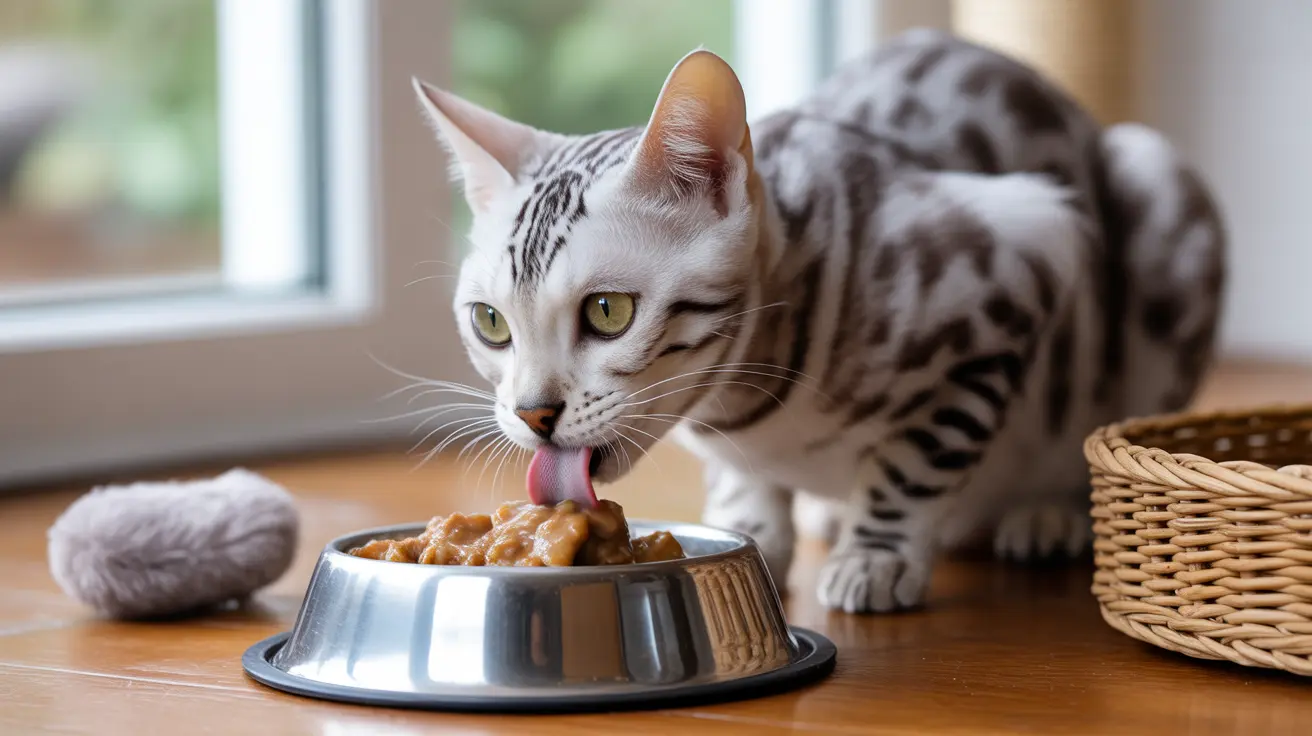If you've noticed your cat licking food but not eating it, you're witnessing a behavior that can stem from various causes, ranging from simple preferences to serious medical conditions. Understanding why cats exhibit this peculiar eating pattern is crucial for their health and well-being, as prolonged reduced food intake can lead to dangerous complications.
As a cat owner, recognizing the underlying reasons and knowing when to seek veterinary care can make a significant difference in your pet's health outcomes. Let's explore the various causes and solutions for this common feline behavior.
Common Reasons Why Cats Lick But Don't Eat
Food Preference and Palatability Issues
Many cats are particular about their food's taste, temperature, and texture. Some will only lick gravy or jelly while avoiding meat chunks, especially if the food's temperature or texture isn't to their liking. Room-temperature or slightly warmed food often proves more appealing than cold portions straight from the refrigerator.
Dental and Oral Pain
Oral health issues frequently cause cats to show interest in food without actually eating it. Conditions such as gingivitis, tooth resorption, oral tumors, or severe tartar buildup can make chewing painful, leading cats to lick food but avoid consuming it.
Medical Conditions Affecting Appetite
Several health issues can cause this behavior:
- Nausea from gastrointestinal disease or medications
- Upper respiratory infections affecting smell and taste
- Kidney disease or diabetes
- Pancreatitis
- Cancer or systemic infections
Environmental and Behavioral Factors
Stress and Anxiety
Cats are sensitive to changes in their environment. New pets, moving homes, or alterations in daily routines can affect their eating habits. Even seemingly minor changes like moving furniture or switching feeding locations can impact their willingness to eat.
Physical Feeding Environment
Consider these environmental factors:
- Bowl placement and type (some cats dislike deep or narrow bowls due to whisker fatigue)
- Proximity to litter boxes or high-traffic areas
- Competition from other pets
- Noise levels during feeding times
When to Seek Veterinary Care
Immediate veterinary attention is necessary if:
- Your cat hasn't eaten for 24 hours
- Shows signs of weight loss
- Exhibits additional symptoms like vomiting or lethargy
- Has difficulty breathing or excessive nasal discharge
- Shows signs of oral pain such as drooling or pawing at the mouth
Practical Solutions to Try at Home
Before visiting the vet, you might try these approaches:
- Warm food slightly to enhance aroma
- Offer different food textures (pâté, minced, chunks)
- Use shallow, wide bowls
- Create a quiet, stress-free feeding area
- Maintain consistent feeding schedules
Frequently Asked Questions
Why does my cat lick food but then refuse to eat it?
This behavior often indicates either a preference issue with the food (temperature, texture, or taste) or an underlying medical condition making it difficult or uncomfortable to eat. Dental problems, nausea, or respiratory infections are common medical causes.
Could dental pain cause my cat to lick food without actually eating?
Yes, dental pain is a frequent reason cats lick but don't eat their food. Issues like gingivitis, tooth resorption, or oral tumors can make chewing painful, causing cats to show interest in food but avoid actually eating it.
How do changes in food texture or temperature affect my cat's eating behavior?
Cats are sensitive to food temperature and texture. Many prefer room-temperature food because it has a stronger aroma and is more palatable. Some cats may only lick gravy while avoiding chunks if they dislike certain textures or find them difficult to chew.
When should I be concerned if my cat licks food but doesn't eat and seek veterinary care?
Seek veterinary care if this behavior persists for more than 24-48 hours, or if accompanied by other symptoms like weight loss, lethargy, vomiting, or visible oral pain. Prompt intervention is crucial to prevent complications like hepatic lipidosis.
Can stress or environmental changes make my cat lick food but lose interest in eating?
Yes, cats are sensitive to environmental changes. New pets, moving homes, changes in routine, or even rearranged furniture can cause stress-related appetite changes, including licking food without eating it.
Conclusion
While a cat licking food but not eating can be concerning, understanding the potential causes helps determine appropriate solutions. Whether it's making simple adjustments to feeding practices or seeking veterinary care, prompt attention to this behavior ensures your cat maintains proper nutrition and health.
Remember that prolonged reduced food intake can lead to serious complications in cats, so don't hesitate to consult your veterinarian if the behavior persists or is accompanied by other concerning symptoms.






